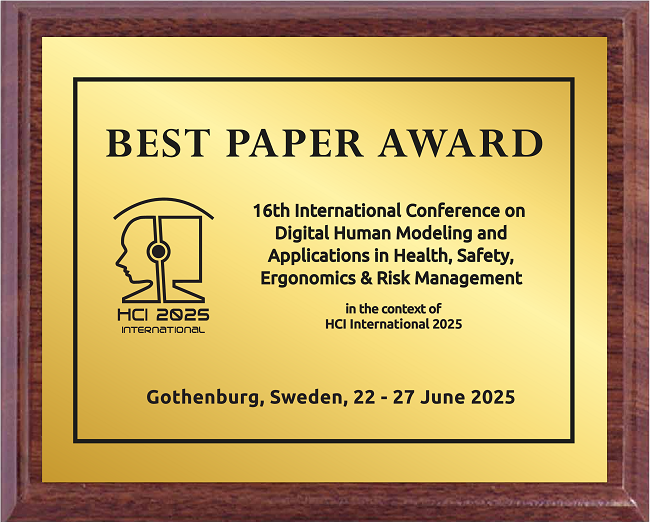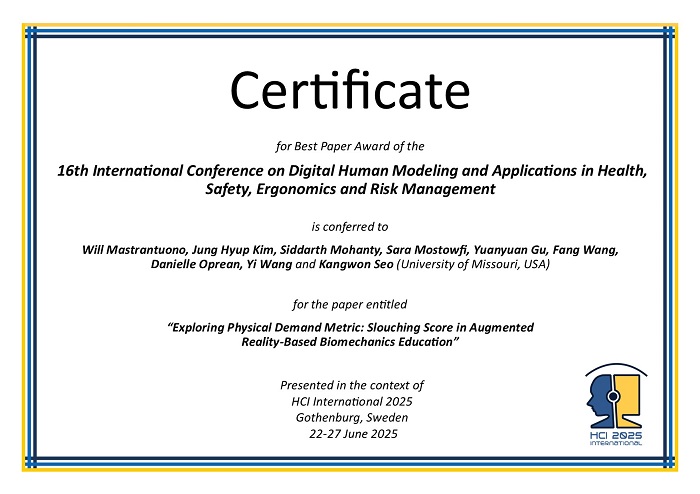The Best Paper Award of the 16th International Conference on Digital Human Modeling and Applications in Health, Safety, Ergonomics and Risk Management
has been conferred to
William M Mastrantuono, Jung Hyup Kim, Siddarth Mohanty, Sara Mostowfi, Yuanyuan Gu, Fang Wang, Danielle Oprean, Yi Wang, Kangwon Seo, (University of Missouri, United States)
for the paper entitled
"Exploring Physical Demand Metric: Slouching Score in Augmented Reality-Based Biomechanics Education"

William Mastrantuono
(presenter)

Best Paper Award for the 16th International Conference on Digital Human Modeling and Applications in Health, Safety, Ergonomics and Risk Management, in the context of HCI International 2025, Gothenburg, Sweden, 22 - 27 June 2025

Certificate for Best Paper Award of the 16th International Conference on Digital Human Modeling and Applications in Health, Safety, Ergonomics and Risk Management presented in the context of HCI International 2025, Gothenburg, Sweden, 22 - 27 June 2025
Paper Abstract
There is an increasing demand for the development of new metrics that can effectively measure physical demand experienced by users in augmented reality (AR) environments. In this study, we evaluated one of the recent metrics, called “slouching score,” in AR-based biomechanics lecture. This study aims to uncover the correlation between the AR interaction and the physical demand of users in a difference setup compared to the earlier study. The slouching score, which evaluates posture changes that may indicate fatigue during AR interactions, is measured using Xsens motion capture equipment. These calculated scores are compared with responses to physical demand assessments surveyed using NASA-TLX questionnaires. One of the key differences between the current study and earlier ones is that participants had to physically move to access the next AR module in earlier studies. In contrast, this time, participants simply needed to click a virtual arrow button to view the next AR modules, eliminating the need for physical movement. Our preliminary findings show correlations between the slouching score from some modules and the NASA-TLX physical demand ratings.
The full paper is available through SpringerLink, provided that you have proper access rights.


